Henry Bird - Master of Bizarre
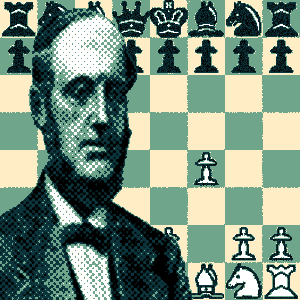
Henry Bird
He was so supportive of the Romantic School that he went farther than anyone else in avoiding any kind of conventional teachings. Not only were positional principles cast aside but also any mention of best opening practice.
He preferred to develop his own openings, mostly on the flank. 1.f4 is named after him (Bird's Opening) and as Black he often played 1...f5 (Dutch Defence) or sometimes the then considered dubious 1...c5 (Sicilian Defense).
He loved gambits and liked to drag his opponents into unorthodox positions where he backed himself to triumph in the chaos. He often played clearly poor moves for just this reason and with mixed results. If it undoubtedly cost him titles, glory and treasure in the long run, he believed it was worth it to keep his games filled with intrigue.
Young Henry
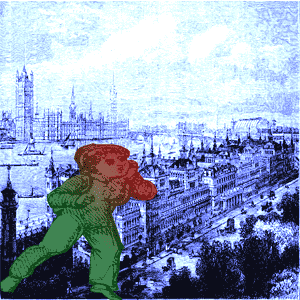
Henry Bird lived in London from the age of 15
Henry Senior sold his draper shop in Portsea due to financial difficulties. The family then moved to London. Here Henry Senior would become an accountant, a new industry that his son Henry Edward, would one day enter and work in throughout his professional life.
The family moved to Lambeth in south London in 1844. Henry Edward was by now about 15 and he was shortly to discover a game that would become the passion of his life.
Early Chess Years
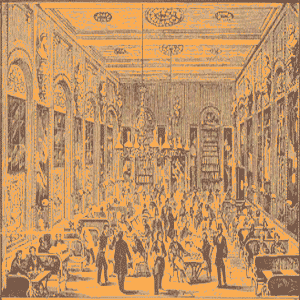
Henry Bird began attending Simpson's in the Strand in 1844
He started as a clerk with the firm Young and Co. in 1846. His father was probably instrumental in Henry's appointment. It was just a couple of years earlier, at the age of 15, when Henry wandered into a coffee house and saw men there playing chess. He later described his very first experiences in chess:
After about three months looking on at chess play in 1844, at Raymond's Coffeehouse near the City Road Gate, where Dr. Michaelson of the Morning Post, and Mr. Finlay, a farrier, were the respective giants, and a cup of coffee the usual stake, I learned moves at chess, and receiving the odds of a Queen for a few games, I happened one day to hear with astonishment that the gentleman conceding me the odds was not the champion of the world, but that better players could be found at Goode's, Ludgate Hill, and Simpson's in the Strand...
Gaining Strength

Henry Bird quickly improved at Simpson's in the Strand
It was some weeks before he in his own words mustered resolution to visit the more prestigious Simpson's in the Strand. When he did he received odds from the professionals Lowe, Williams, Finch and Buckle.
He said: From each I received the Queen soon improving to the odds of the Knight, and then playing even with them. Buckle alone, who did not mind hard work, essayed to give me pawn and move, but for a short time only.
Making Waves as a Rookie
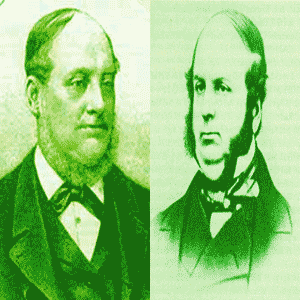
Buckle was the last player to give Henry Bird odds, but not for long
It's believed that Bird and Buckle played two matches, first in 1847 and then in 1849. Both matches were played with Buckle giving Bird pawn and move. Buckle won the first 9-7 but Bird won the second 7-0. After that Bird played all of the strongest masters on even terms.
He lost to another rival George Webb Medley 6-3 with two games drawn in 1849. He had done enough to secure one of six slots for British players in the infamous London Tournament of 1851.
There he was eliminated in the first round by the experienced Prussian master Bernhard Horwitz (2.5 - 1.5). A match with first to 7 wins was organized between the two later that year. A purse of £20 was to be divided with £16 for the winner and £4 for the loser. Horwitz won 7-3. Bird only played two games on even terms with Howard Staunton throughout his career and remarkably won both of them.
Match Against Morphy
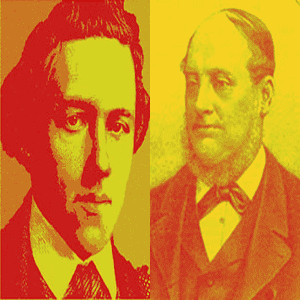
Paul Morphy beat Henry Bird 10-1
He was inactive for quite a few years but returned playing a match against Ernest Falkbeer in 1856 to contest top spot at Purssell's Coffeehouse. Bird won 2-1. They played a longer match the following year which Falkbeer won 5-4, when Bird blundered in Game 13.
In 1858, a young player arrived in Europe off a steam ship from the United States. He was the legendary Paul Morphy. Morphy played every prominent player in London and later in Paris, apart from Howard Staunton who in the end chose not to risk his reputation in a match.
Morphy beat Bird 10-1 in London although the American found Bird's play so offbeat and interesting that he was known to observe and record Bird's games with others in the coffeehouse.
Romantic Values vs New Positional Ideas
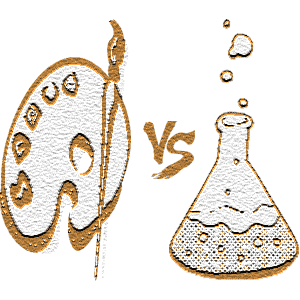
Henry Bird was a leading advocate of the classical style against the new positional school of William Steinitz
These positional concepts were proving effective in repelling tactical assaults by old school romantic masters. The positional players were able to gain decisive advantages and win in the endgame. Romantic purists, including Bird, were appalled by what they saw as ungentlemanly cowardice.
They claimed the new style was dull and boring and was ruining chess as a spectacle. Controversy flared up as Steinitz and his detractors clashed in the press. This period was known as the Ink Wars. This would all take place in the 1870s. For now Steinitz was still playing in the classical way. Bird would play against Steinitz soon after his return. The match took place in 1866.
Bird vs Steinitz
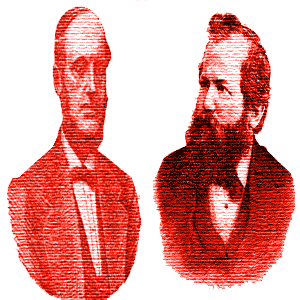
Henry Bird pushed William Steinitz hard in 1866
He was less successful in the main event, going down 8-6 to Steinitz. Now Steinitz was the main man and would remain so for decades. Henry Bird was able to organize a match against Steinitz almost immediately.
The match was organized chiefly to give the ring-rusty Bird a chance to practice against a top class opponent. There was no sense that the outcome would be anything other than a comfortable victory for Steinitz. When he led by 3 points after 9 games no one was surprised.
Then Bird suddenly won two games in a row and came within a whisker of a third in Game 12. Bird trailed by a single point heading into Game 17 when his firm contacted him and instructed him to travel to America for work.
His position was lost in that game which was adjourned after 16 moves. Steinitz was eventually awarded this game and the match on a score of 7-5. It was however a very respectable result for Bird.
Adventures in the New World
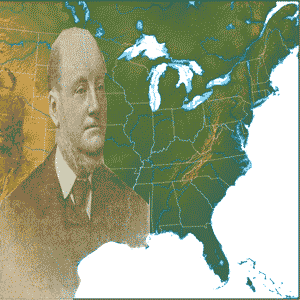
Henry Bird lived in the United States from 1875 to 1877
The honeymoon period did not last. Bird became embroiled in a number of disputes with competitors and organizers alike. He also lost the wow factor as a top European master when his results against the Americans were underwhelming. Turns out the masters of the New World were much closer in strength to the Europeans than had been anticipated.
The Americans worked together to deny Bird his first major championship victory when he was leading the Clippers Tournament of 1876. They saw to it that he finished fourth, 2 points behind winner James Mason. Bird cut ties with professional chess after that and played strictly in amateur clubs. He returned to England in 1877.
Later Years
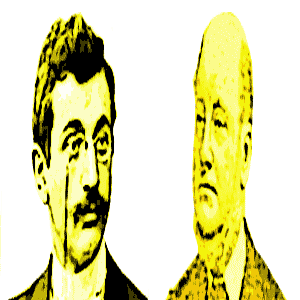
Henry Bird played 2 matches against rising star Emanuel Lasker in the early 1890s
He also played matches against other masters from time to time. He lost 4-1 to his great friend Joseph Blackburne in 1888. He lost 3-2 to Isidor Gunsberg in 1889.
Bird played two matches against the up and coming Emanuel Lasker in the following years. Lasker won 7-2 with three drawn games in 1890. Lasker also triumphed in the 1892 match recording a 5-0 clean sweep. Bird's last major tournament was Hastings 1895 and he had retired altogether before 1900. He died in 1908.
Legacy of Bird
Bird's Opening, 1.f4 can lead to wild and crazy games, not least in the hands of Henry Bird himself
Here he hoped his extraordinary creativity would overturn any disadvantage and give him the edge. This approach was hugely successful against amateurs and scored him many wins against celebrated masters along with some heavy defeats.
Bird's unending search for interesting positions and new pastures is what inspired Bird's Opening, his discoveries in the Dutch Defense and the Sicilian. He also has a Variation (Bird's Defense, 1.e4 e5 2.Nf3 Nc6 3.Bb5 Nd4) in the Ruy Lopez named after him.
Moving On

Paul Morphy
And yet something of his spirit lived on in the Hyper-Modern style pioneered by Aron Nimzowitsch and Richard Reti among others. Another great, Emanuel Lasker shared at least one trait with Bird in that he too like to play objectively inferior moves in a bid to induce mistakes out of his opponents.
When it came right down to it though, Bird was yesterday's man in the face of the positional masters. He led the charge against William Steinitz in the 1870s during the Ink Wars. Steinitz codified the Positional Concepts first seen employed so efficiently by the mercurial Paul Morphy.






